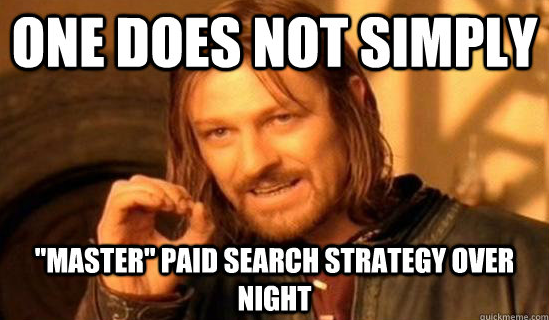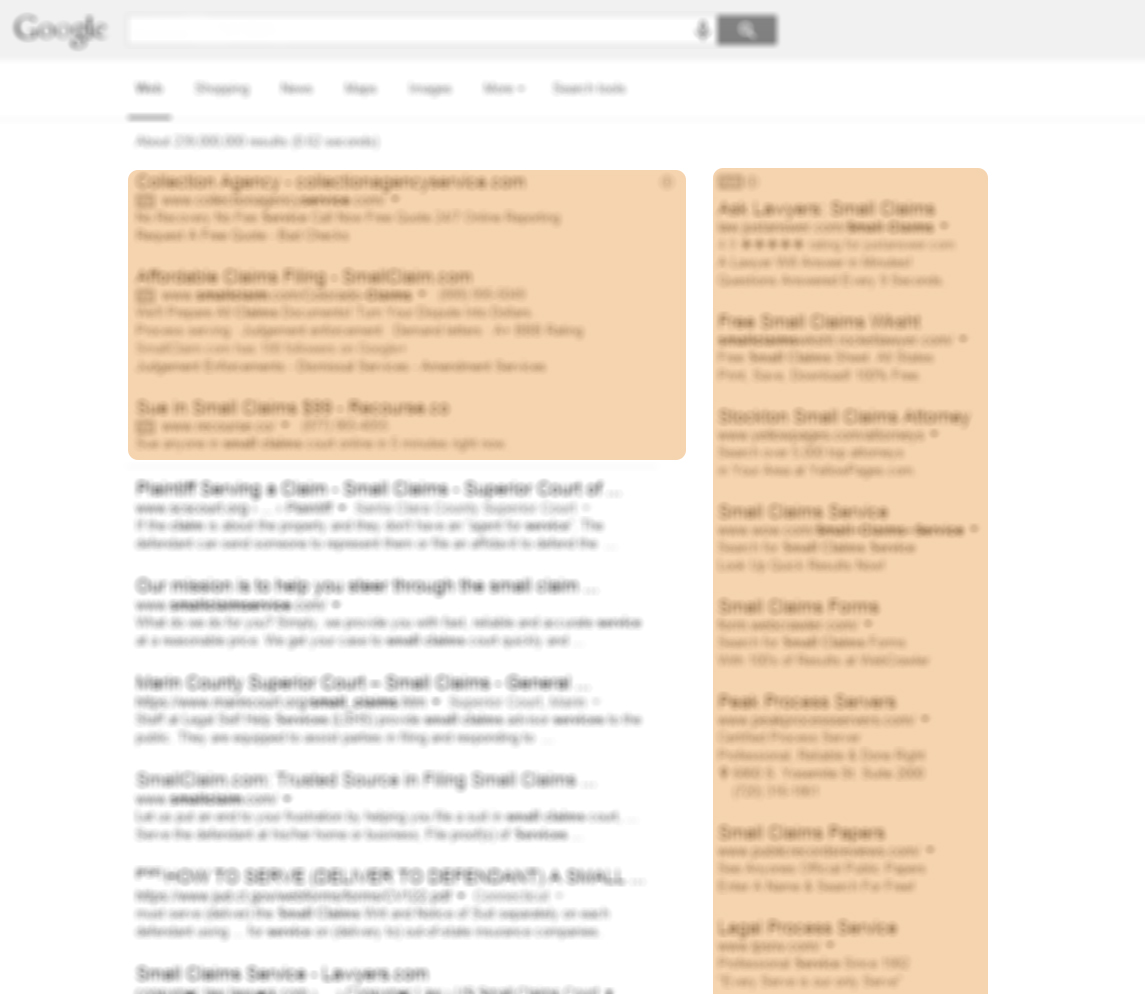The “What” And “Huh” of Paid Search

If you have questions like “What’s a SERP?” “How does Google know what ads to show?” Or “How do you advertise through search engines?” You’ve happened yourself on a blog series that seeks to explain all of these things! Let us pull back the curtain surrounding the mysteries of search engine advertising and perhaps even enlighten those who wish to use it to their business’ advantage.
PPC You Say? Let’s Get PPUmped!
There are many different forms of advertising in today’s wide and expansive online marketing space. But how should you decide whether or not to add pay-per-click advertising to your marketing tool belt? In this introductory article, I’ll explain the broad virtues of the PPC model to you, the savvy entrepreneur or marketing ninja, about how it may be one of the greatest ways to invest in your company.
Marketing agencies, industry experts and media outlets all use a variety of terms to describe what’s collectively known as the “pay-per-click advertising model.” Here are a few common phrasings:
- Paid search marketing
- Paid search advertising
- Pay-Per-Click marketing
- Cost-per-click marketing
While these terms, along with various combinations, exist elsewhere on the web, what they all boil down to is that an advertiser pays a given search engine a certain price each time a user clicks on their ad in exchange for exposure.
The Fat Of The (PPC) Land
Indeed, there is a set process that the advertiser follows to have their ads eligible to be displayed. It can be broadly summarized in just a few steps:
- The ad is created by the advertiser
- If the ad fulfills the required criteria, it is deemed “eligible” and advertising platforms such as Google’s Adwords or Bing Ads will automatically submit the ad to an auction when certain other criteria are met. These include when the search query provides a good match to the content and website associated with the ad.
- If the ad isn’t eligible (that can be for a number of reasons), the ad won’t be submitted to the auction and won’t have a chance to be displayed. Don’t worry, though, most advertising platforms are pretty good at letting you know when your ad has been deemed ineligible and oftentimes it is due to easily correctable mistakes.
- If the ad submitted is eligible, the ad will be displayed on the search engine results page or (SERP) where it will be viewable to the user.
- If the user clicks on your ad, the advertiser is charged for the click (hence pay-per-click) by the search engine.
- If the user does not click on your ad even when the ad is displayed, the advertiser isn’t charged.
- This process repeats itself every time a search query is entered by the user.
What’s really amazing, and somewhat difficult to fathom, is that this process is repeated nearly 6 billion times over the course of the day, throughout the world. And that’s just looking at Google. Other search engines such as Bing, Yahoo, Ask and others could very well add several hundred million more to that quotient.
Numbers Something Algorithms Something Something
Luckily, most advertisers don’t task themselves with comprehending such a ridiculously huge number, simply because they don’t need to. The algorithms that power today’s search engines are some of the most complex mathematical arguments in the history of mankind. Allow me to illustrate:

That is correct, in this instance Google was able to return over 11 BILLION results in the time it takes for me to blink. Maybe slowly blink, a “there’s-something-in-my-eye” kind of blink.
The point is that once you have awesome ads, and the search engines you’ve chosen to advertise through have deemed them eligible, they precisely calculate when your particular ad, out of the multitude of other ads eligible at the same time, is most relevant to a particular user and for their particular query.
And … The Other Stuff?
Before we dive any deeper, I’d like to explain how your ads would differ from the other results on the SERP (if you’ve retained what that acronym means, you’re well on your way!), because they couldn’t be more different. Ads that participate in and win each auction are relegated to a few select areas on the results page.

All of the highlighted areas are where paid search ads can be displayed, while the results in the non-highlighted areas are known as organic search results. Ads are displayed in a similar fashion on mobile devices (the above image was captured from a desktop), but because mobile devices have such smaller screens and therefore much less display real estate, ads are shown in-line with the rest of the results, beginning at the top.
So then, the difference between paid search ads and organic search results is pretty simple; organic results don’t go through an auction and don’t cost a dime. How those results are displayed follow a completely different path to the SERP, and have little to no bearing on how paid search ads are displayed. Apples and oranges.
That’s Hot
However, the important thing to realize here is that paid search ads have the ability to appear at the very tip-top of the page. This is the exact reason why you pay to have ads appear in this space; this is the first area people’s eyeballs look at once the page loads.
If you clicked the link, what spawns before your eyes is what’s called a “heat map”. A heat map measures the volume of clicks in a particular area of a web page, with highest click volume indicated by the reddest of reds.
As you can see, the lightly shaded box towards the top contains a hefty amount of heat, right where paid search ads are commonly displayed. This is a good place to be, and this is where you want your ads to appear with all possible haste.
It’s important to understand also that since the algorithms employed by search engines have become so incredibly powerful, users today expect to find exactly what they’re looking for within the first few results as the heat map above so clearly shows. This expectation reinforces how important the position of your ads, and how crucial it is that they appear at the very top.
Until Next Time
I hope you’ve found this primer useful, and will further consider (if not outright adopt) a paid search initiative for your business or service. In the coming months, I will expand on the many topics that were touched on in this article. Bidding, quality scores, ad relevance, the auction process, targeting your ideal audiences and a whole lot more await!
Jeff Stuart
Recent Posts
Recent Comments
- Shannon Thammasiene on How to Create a Successful Blog
- Sarah on How to Create a Successful Blog
- How to Create a Successful Blog on 5 Free Keyword Research Tools that will Rock your Socks
- Olivier Hamphrey on This Week In Social Media
- Richard Dickerson on Use Email to Sell without Selling


